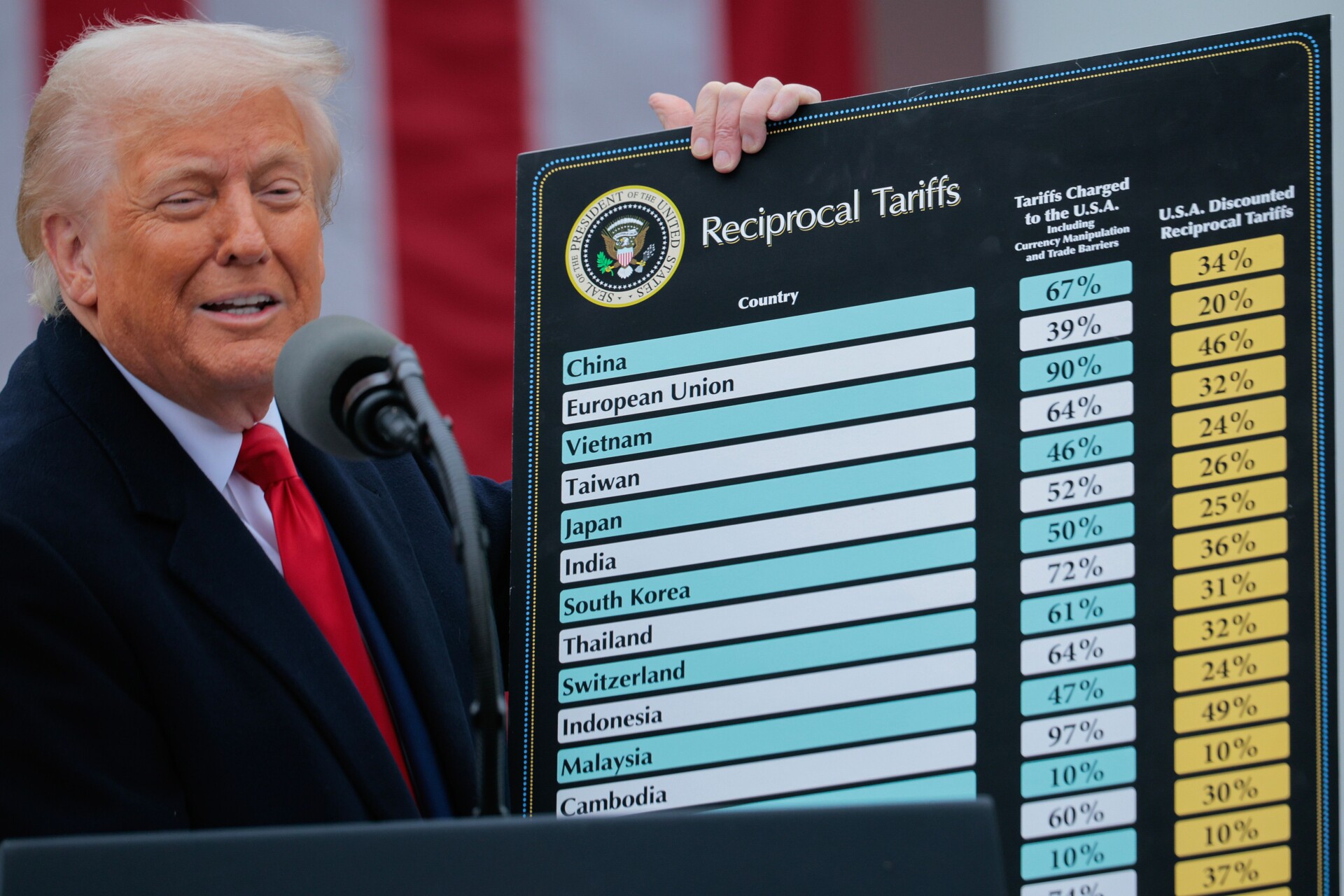Bitcoin miners are scrambling to adjust to Trump’s global tariffs, which are poised to increase prices on ASIC miners, electrical gear, network infrastructure and more.
STORY CONTINUES BELOW
“It’s a complete scramble,” Luxor COO Ethan Vera said on last week’s Mining Pod news roundup. “From the ASIC trading front and brokerage, miners have not been very proactive here. They have not necessarily frontrun orders and gotten them into the U.S…they’re operating in a less than a week period here to make sure all shipments that are coming out of SE Asia are picked up and getting delivered.”
This article first appeared on Blockspace Media, the leading Bitcoin industry publication dedicated to covering Bitcoin tech, markets, mining, and ordinals. Get Blockspace articles directly in your inbox by clicking here.
ASIC prices have trended slightly downward over the past year, according to data from Hashrate Index’s ASIC Price Index. A new-gen model, like the S21, currently runs miners roughly $3,400.
Working overtime to pull forward ASIC orders before these tariffs that were due to take effect on April 9, top firms chartered flights at 2-4x the usual rate, anywhere from $2-3.5 million per flight according to estimates provided to Blockspace from Synteq Digital CEO Taras Kulyk and Luxor’s Vera.
But the initial panic was in response to the now outdated tariff policy. Before Wednesday’s 90-day pause on all but Chinese tariffs, the Trump administration had proposed blanket tariffs on more than 180 countries, including 24% on Malaysia, 36% on Thailand, and 32% on Indonesia – three countries that predominantly manufacture the ASIC mining computers that are the beating heart of the mining business.
Following the 90-day grace period, The Trump Administration plans to lower the reciprocal tariffs to a flat rate of 10% for all affected countries. So the scrambling seems to have been somewhat in vain. Or perhaps not – the administration’s trade policies are so mercurial, so it’s anyone’s guess as to whether the 10% rate will stand.
Even at 10%, the tariffs are material enough that they will hamper efforts to deploy hashrate in the U.S., the dominant market currently with an estimated 35-40% share of Bitcoin’s hashrate. As it stands, it’s likely that the tariffs will noticeably slow bitcoin’s hashrate growth this year versus prior expectations.
Blockspace estimates that U.S. bitcoin miners imported over $2.3 billion worth of ASIC miners last year and over $860 million in Q1, starting with Malaysia, Thailand and Indonesia, the leading makers of such machines.
The originally proposed reciprocal tariffs
Bitmain and MicroBT, which collectively corner 90%-plus of the ASIC miner market, moved their ASIC manufacturing capacity outside of China to Malaysia, Thailand, and Indonesia in response to Trump’s China tariffs in his first term. MicroBT opened a U.S. assembly plant in 2023, and Kulyk said that Bitmain opened its first U.S. assembly line in January. Still, these plants represent a fraction of either manufacturer’s total production.
Kulyk said that “U.S. production will have a material discount” compared to imported hardware. But they will still suffer from tariffs on raw material like aluminum, electronic components for control boards and the like. So ASICs produced in America will still be more expensive than before the tariffs were introduced, especially if the proposed 125% tariff on Chinese goods holds.
Vera said Chinese electrical components are slated for a 50% or more tariff (and could even be subject to as much as 125% based on an updated rate from the Trump administration). This will affect everything from ASIC miner prices to electrical infrastructure at the mines themselves.
As the tariffs increase the cost of imported ASIC miners and other mining equipment, then all else being equal, any existing facilities in the U.S. should become more valuable. Even so, U.S. miners looking to expand might find acquisitions an easier route than importing equipment. Accordingly, Kulyk expects the tariffs will furnish merger and acquisition deals, explaining that “suddenly these miners that have older gear that seem like zombies actually look like interesting acquisition opportunities.”
Kulyk said that currently “no one is buying” on the secondary market as they wait to see where the chips fall.
In the medium term, the tariffs are indisputably a “big blow” to the U.S. bitcoin mining sector, that is “certainly going to stagnate growth in the industry if these tariffs continue,” Vera said.
“If you’re paying more for a machine than your competitor in Canada or Russia, it’s going to be hard to compete with international miners.”
“Canada, from an economic perspective, will actually be a much more interesting place to do business. Corporate taxes are slated to be reduced. Capital gains taxes slated to be reduced. There’s a lot of wind in the sale of Canadian economic growth, especially on the data center side,” Kulyk said.
Mark Carney, the Liberal Party frontrunner in Canada’s election, supports bolstering Canada’s data center and energy industries. But Canadian provinces such as Ontario and Quebec have moratoriums on new power applications for bitcoin miners, so doubts remain about Canada’s attractiveness to miners as an alternative to the U.S.
Kulyk believes that Northern Europe could also be scouted for hashrate expansion, while Vera said that miners might find a few gigawatts of opportunity in South America and parts of Africa too.
But growth will be limited if miners can’t tap the U.S., which has led global hashrate growth since China’s 2021 bitcoin mining ban. Vera believes that the tariffs’ impact on bitcoin mining will be of a similar scale as the China mining ban, and that hashrate will shuffle away from the U.S. to other countries. The tariffs could also materially lower the cost of ASICs in other markets, since international miners won’t be competing with the biggest buyers, U.S. miners, for allocation.
“In terms of the scale of geopolitical impact, it’s probably relevant to think about this as being on par with the China ban,” Vera said. “The benefiters are going to be international miners, who are most likely going to be accessing machines at a much cheaper cost now because they are not competing with as much demand from the U.S.”
“You could make the case that network hashrate will continue its rise…but the U.S. has been a large part of its growth as an energy superpower…there’s not that much power to go around,” Vera concluded.

